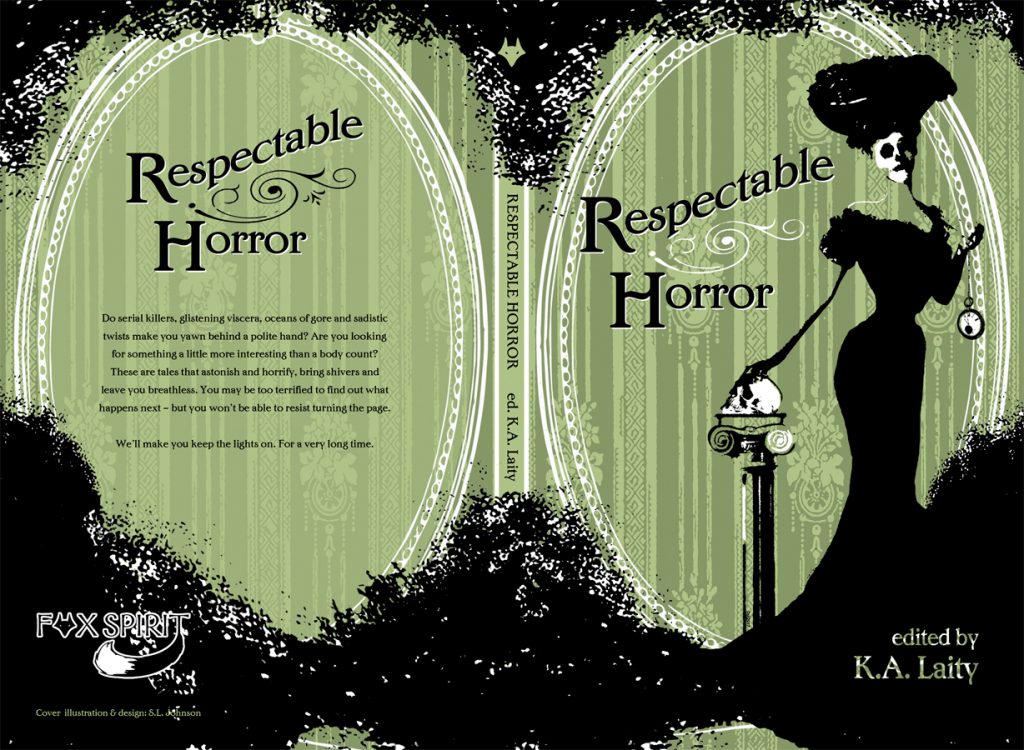
Well what more do we need to say? Coming very soon a wonderful collection of creepy tales to enjoy with the last tendrils of winter mist.
The last installment of the Elkie Bernstein trilogy by Jo Thomas is here!
As far as Elkie’s concerned, it’s all over and her happy ending is just around the corner. She’s on her way back to Wales having freed Ben from the clutches of the controlling Dr Olsen and ensured that Dave, her ex-everything, will never be in a position to kill again. She’s even managed to find herself a (somewhat unwilling) father figure in Conn, the one werewolf in the world who seems to have his shit together. All she has to do is say “thank you” to the Valemon, a company so at odds with Olsen they were willing to support her, then get on a plane for home. Easy, right?
cover art by Sarah Anne Langton

Available now in paperback!
I reached out to a whole bunch of my favourite editors with a few basic questions around short story collections and the editors perspective. For today’s session I am delighted to welcome Jonathan Oliver of Solaris/Abaddon, Mhairi Simpson and Margret Helgadottir who have edited for Fox Spirit and Farhana Shaikh who runs Dahlia publishing.
When you put a call out do you already know exactly what you are looking for?
Jonathan Oliver : I start with a theme, so generally I know what I’m looking for, but when I put together submissions guidelines, I always say to authors ‘here’s the brief, but play with it, stretch it to its limits.’ So, I want to give my writers as much room as possible to explore within the theme I’ve given them. After all, I don’t want to end up with an anthology of similar stories.
Mhairi Simpson : No. When I did my first call I had a very specific idea in mind. By the end of it I realised I knew nothing and was just happy to be astonished at the wide variety of tales even a relatively narrow prompt can produce.
Farhana Shaikh: I try not to be too clear about what I’m looking for because I don’t want a piece of writing to fail before I’ve had the chance to consider it properly. This is especially true for an anthology because the breadth of style tends to be so broad and different writers respond to themes in such different ways.
What I’ve realised though is that a short story is successful as long as it does what the writer set out to do. In the simplest of terms, I could try and break down what that success often looks like. For example it might mean strong characterisation and a refreshing voice, but I find those terms can be reductive because it might also just be a beautiful story told in the simplest of ways.
Margrét Helgadottir : I have only put out an open call one time, for the Winter Tales anthology. I knew then what kind of stories I wanted – a strong voice, an interesting plot, atmosphere, and also a more unspoken chill of the dark and cold winter season – but other than this I tried to be very open both in the call and when I read the submissions. As for the monster books (working on volume four now), they are invitations only. I am hunting for monster stories. They can be written in all genres but they have to have something monstrous about them and they have to be dark. I am very clear in the invitation what I am not looking for (satire, erotica etc).
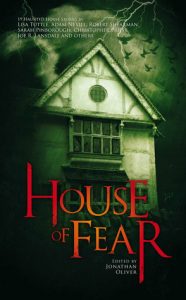
What things will make you discount a story quickly?
Jon : Badly presented and with obvious errors. The other thing is if the story has completely ignored the brief. So, if I say this anthology has to be about a haunted house, and I get a submission that’s about a mutant spider or something, with no haunted house in sight, then that will be pretty quickly rejected. Fortunately it’s not something I have to worry about a lot as all of my anthologies are invite only.
Mhairi : Condescension on the part of the author. A pushy author asking if I’ve made a decision yet when the submission period is still open. Any mention of sexual assault which doesn’t feel right in the story.
Farhana : My pet hate is writing that is cluttered with adjectives or flowery language. I tend to steer away from writing that is trying too hard or clever, or where the writer clearly hasn’t worked out what the heart of the story really is. Having said that, I do like to re-read writing (this is especially true for short stories) because I don’t like to make too rash a decision about whether something works or not. Editing is after all, hugely subjective and sometimes I have to challenge myself to work with writing that is not necessarily to my taste.
Margrét: Except for not following the guidelines and the idea of the book, I will quickly put a “no” on any story that uses racism, rape, violence, discrimination of gender or sexual orientation, when it is clear that it doesn’t do anything for the plot. I don’t discount a story because of bad grammar or language if I see a potential—a core in the story that will shine if the story is polished in the edits. I have had 2-3 stories in all the volumes I have edited that required more work from me and the author than the other stories but I am very satisfied that they are part of the books today.
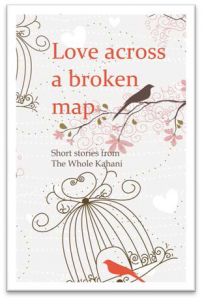
Would you consider taking a story that doesn’t quite fit the idea behind the call and whatever your answer, why?
Jon: I like to be pleasantly surprised by submissions. So, for example, we all have an idea about what constitutes a haunted house and a haunting, but I also like to see new takes on such traditional subject matter, new twists on the formula. Sure, I’m a sucker for a traditional ghost story, but more so I love the possibilities that new fiction explores.
Mhairi: Yes. I’ve initially said no to a story which didn’t seem to quite fit the call. I had something else in mind. Then as more stories came in I realised I had an opportunity to show ideas which weren’t in line with my own thinking, because none of the stories quite fit the call, certainly not what I’d been expecting to get. It was a learning experience – I learned not to make assumptions about what did and did not fit. It broadened my mind and was a tad humbling, too.
Farhana: I’d be reluctant to accept anything that was too far from the initial concept, purely because I think collections have an odd way of working in that the stories once ordered have their own life and rhythm. I’d be reluctant to upset the balance of that. But as I’ve said, the scope for an anthology tends to be quite wide, so it’s rare that such a thing happens. Where this has been the case, I’ve simply asked the original contributor to submit something else.
Margret: No and yes. If it’s far out from the book idea, no. If the book is about Europe I will not include a story that takes place on the Moon. However I can include a story if it plays with the boundaries of the sub call but still has one foot inside the frame. I have done this a few times but only when the stories were so excellent in both language and plot that I just couldn’t say no. Often they can be shaped a little bit in the edits so they fit the book better.
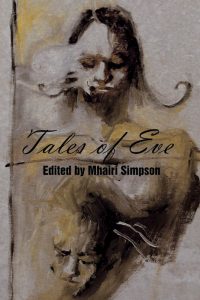
How do you approach running order?
Jon: You want to start with a belter right out of the gate. You want something substantial in the middle and you want to end on a story that packs some sort of punch. In between you can get the reader settled and explore all the wonderful variations on the ideas your authors have sent you.
Mhairi: I try to find a thread or arc which links all the stories together and then decide where each story falls along that arc. For Tales of Eve it was a genre thread, varying from hard sci-fi to high fantasy so I started with the hardest sci-fi and ended with the highest fantasy. It was actually really difficult!
Farahna: By the time I get to a running order, I’ve probably read the work separately a good few times and something will be emerging about how I’d like to start and where I’d like to begin. Of course, a reader may choose to go in whatever order they wish, but sometimes as an editor I think such things are important.
Margrét: I try to put the strongest stories up front and in the back. You need to catch the readers right away. A short excellent story as number one is a very good tactic. It sets the tone of the rest of the book quickly. The last two stories should be the after thought of the book, something to make the book live a little bit longer in the readers’ minds, make them reflect a little bit about the book theme. Other than this I am concerned about putting the stories in anthologies in a natural flow, vary it a little for the reader. This goes for both the length of the stories, style and theme. I don’t put two vampire stories next to each other of the other ten stories are about were wolves for instance.
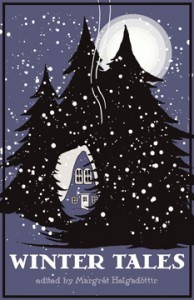
What are some of the things you think people underestimate in regards to the time/effort involved in the anthology editors role?
Jon: Coming up with the theme always takes the most time. You want something iconic enough that people will pick the book of the shelf, and bring some sort of expectation, but you also want something different enough that you stand out. In an invite only situation you know to some extent the strengths of your authors, so editing the stories is the easiest and most pleasurable part of the whole affair.
Mhairi: It’s not the typos – if a story’s got that many mistakes I’d send it back and tell them to run it through spellcheck or a beta reader. When it comes to figuring out what a story is trying to say and if it can be said better, however, that can take a while. It’s usually a clarity issue – I’m not sure what’s going on and the author makes some changes and through the various changes we get closer to the diamond at the heart of the tale.
Farhana: I don’t know if anyone does underestimate what an editor brings to a collection but of course, they bring a whole deal of experience and expertise. It’s the editor’s role to not only select the stories and collate these in some order, but often it can mean a lengthy battle with contributors to undertake revisions, and ensure these come back on time, as well as project manage the entire thing. It’s fine, if you have around ten contributors or so, but once you start veering in to the twenties and beyond it can become challenging. An editor may also be involved in promoting the book, and keeping all the contributors in the know, so it’s a huge effort with lots of emailing back and forth. If the editor is also the publisher, as in my case, then there’s lots more going on behind the scenes away from the anthology with regards to choosing the title, managing the jacket cover designs, and working with suppliers to ensure the project can be delivered on time and on a shoe-string budget.
Margrét: I think many don´t realize what the editor job is. If you are editor for books from small presses you must involve yourself in the book production and getting the book out there. In addition to the editing of the language and grammar, editing of the story flow and angles, proofreading and all that, I would say that at least 30 percent of my tasks in a book production is preparing the book production (researching the book, invitations to contributors etc) and all the work when the book is published with marketing, trying to get reviews and spreading the word amongst the thousands of other titles. I spend a lot of time researching what magazines and venues which might be interested in looking at the book. The monster books are a challenge since I try to reach book bloggers and media also in the continents we cover: Africa, Asia etc. It is hard work but it is so satisfying when you see results.
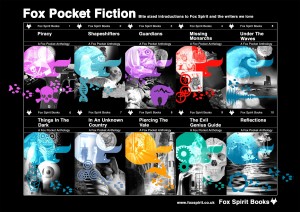
Over the next couple of weeks we will be doing updates and changes to the website. Hyperlinks to pages should remain as they always were but we will be slimming down the menus to make navigation easier, particularly on mobile devices. Please excuse any disruption and if you do link to any of our pages it may be worth checking those links at the end of the month just in case.
Many thanks for your patience. We suggest a nice cup of tea and a biscuit.

As we reach the end of 2016 and stumble blinking into a new year, I thought instead of the usual
‘what did we do, what are we planning’ round up, I would simply gather some recommendations of
books to take you into 2017. These came in response to a shout out on twitter for people to tell me
what books they want people to take with them into the new year.
We meander through many excellent genre titles, occasionally stepping out of speculative fiction
and even into non fiction as people share titles that have excited them and that you might want to
consider. There is a good mix of getting away from it all and getting ready for whatever 2017 brings.
I have added amazon uk links where possible, in case you want to know more about any of the books or add them to
your reading for the new year.
Names and quotes included with permission.
My choice is ‘How to Be Dull: Standing out next to genius‘ by Basil Morley Esq (K.A. Laity). The only self help book you will need in 2017 tells you how to be taupe in a world full of primary colours.
Kev McVeigh (@kevmcveigh) recommends ‘Will Do Magic for Small Change’ by Andrea Hairston as a great fantasy read to start the year with. Loving the title so will be checking this one out myself.
‘Infomocracy’ by Malka Older is suggested by Paul Weimer (@PrinceJvstin) as a cyberpunk novel to help us through the challenges of 2017.
Will Ellwood (@fragmad) recommends ‘2312’ a sci fi by Kim Stanley Robinson ‘because society can be better’ which seems a good starting point to me. Also the collected short stories of J.G. Ballard.
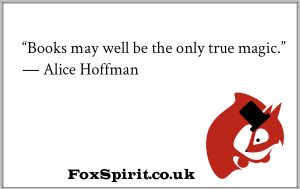
‘Zero World’ by Jason Hough is recommended by Steve Taylor Bryant (@STBwrites), SFF with super spies.
‘The Sorcerer to the Crown’ by Zen Cho, a sword and sorcery fantasy about English magic, wizards and breaking down barriers. Recommended by the wonderful Juliet E McKenna (@JulietEMcKenna).
‘Children of Time’ by Adrian Tchaikovsky which will have you siding with the spiders gets a shout out from Juliet E McKenna and Tade Thompson (@tadethompson)
‘On the Edge of Gone’ by Corinne Duyvis, young adult fiction, was recommended by Lynn O’Connacht (@lynnoconnacht)
‘All the Birds in the Sky’ by Charlie Jane Anders recommended by Rob Haines (@Rob_Haines) it includes a witch who talks to animals and time travel.

Shona Kinsella (@shona_kinsella) recommends ‘Blindside’ by Jennie Ensor, ‘The House of Shattered Wings’ by Aliette De Bodard and ‘The Good Immigrant’ by Nikesh Shukla
Alasdair Stuart (@AlasdairStuart) draws your attention to ‘Six Wakes’ by Mur Lafferty which is describes as a ‘note perfect locked room clone murder mystery in space’. (Sold!)
‘The Memoirs of Lady Trent’ by Marie Brennan is recommended by Margret Helgadottir (@MaHelgad) It has Dragons!
‘The Briefcase’ by Hiromi Kawakami while not spec fic also gets a big recommendation from Margret as does ‘Earth Abides‘ by George R Stewart.

Terrible George (@monster_soup) recommends the grim, violent reimagining of Alice in Wonderland, ‘Alice’ by Christina Henry. (I loved this one too!)
Alec McQuay (@Vampiricchicken) ‘Absolute Pandemonium‘ – Brian Blessed’s autobiography. ‘It’s the absolute nadgers’.
‘Mongrels’ by Stephen Graham Jones is recommended by Paul Michaels (@paulmichaels) as dark and wry.
The seasonal Jingling Nerdish (@whirlingnerdish) recommends ‘Geek Feminist Revolution’ by Kameron Hurley and ‘The New Jim Crow‘ by Michelle Alexander.
‘Das Kapital‘ by Karl Marx gets a recommendation from Damien Walter (@damiengwalter) for those leaning toward something a bit more serious for new year’s reading.

Lynda E Rucker’s ‘You’ll Know when you Get There’ a collection of stories, comes from James Everington (@JHEverington)
Shana DuBois (@booksabound) suggests ‘Desert Songs of the Night: 1500 Years of Arabic Literature’ edited by Suheil Bushrui and James M. Malarkey with the comment ‘Exploring the roots and beauty of other cultures is paramount today’. (Couldn’t agree more).
Mr Fox (@TJEverley) recommends ‘The Minotaur takes a Cigarette Break‘ by Steven Sherrill, a novel that sees the Minotaur working as a chef and living in a trailer. Also ‘All you Need is Kill‘ by Hiroshi Sakurazaka which sees the lead caught in a timeloop, reliving his death.
‘V for Vendetta‘ by Alan Moore & David Lloyd makes it into the facing 2017 category with a call from Steve Birt (@EvilStevieB)
The seasonal Santa Runny (@runalongwomble) suggests ‘The Fifth Season‘ by NK Jemisin.
Beckett’s ‘Eden trilogy‘ or Walton’s ‘Thessaly trilogy‘. ‘I think we’ll need in 2017 the reflections they bring’. from C. (@solinthesky)
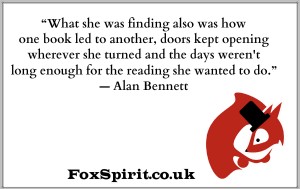
Chris Nguyen (@ChrisGNguyen) suggests Animal Farm by George Orwell and ‘All the Light We Cannot See‘ by Anthony Doerr
The Complete Worse Case Scenario Survival Handbook by Piven & Borgenicht because according to Chloe Yates (@shloobee) ‘we might fking need it’.
Recommended by Joyce Chng Starhawk’s ‘Dreaming The Dark‘, a book on magic and spirituality.
From Dylan Fox (@foxie299) ‘Watership Down‘ by Richard Adams. ‘Teaches us to listen to our instincts, to believe, to fight, to keep fighting… and to accept death’.
So there you are, a few ideas to get you going as we head towards 2017, swords raised and flag flying and books stockpiled!
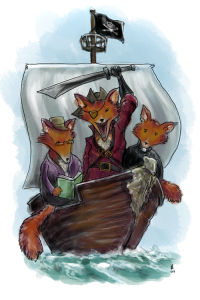
The World Tour of Monsters
by Margrét Helgadóttir
I am so happy that Asian Monsters is now out from Fox Spirit Books, after one year of work. Asian Monsters is the third volume of the annual Fox Spirit Book of Monsters series. We started with Europe in 2014 and continued with Africa in 2015. Next stop will be the Pacific area in 2017 before we end the world tour at the continent of America.
This year we stop in Asia. We present you tales of beasties from the nights of urban Kuala Lumpur, Hong Kong and Lahore to the monsters of the mountains and forests, told by fourteen authors who are either from, have lived in, or have another strong connection to this wide stretching continent. We want to show the world not only all the great monsters but also all the wonderful authors in the world who tend to be ignored in the western popular culture. Who else should tell us about the monsters from their regions but the authors who know them best? Thus, from volume two (Africa) I have searched for authors from the region who can either tell a tale based on local folklore or even come up with a monster of their own. I also try to locate illustrators and graphic artists from the regions we visit but have not managed to have this hundred percent in the books.
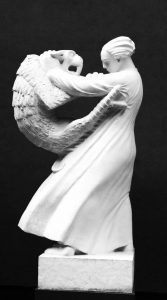
What I have learned from the monster book series, is that every country and region in the world has wonderful dark and eerie tales of monsters, some of them really old, maybe even thousands, of years old. No matter where you are in the world, the monsters have been someone to blame when bad things happen (sudden death of dear ones, bad luck, ship wrecks) or a source to explain mystical things happening around humans (like thunder and lightning). Many monsters also challenge the humans’ thoughts and fears of what happens when you are dead, or the relationship between human and the animals in wilderness.
If you are familiar with the book series, you might have noticed that we were two editors on the first two volumes, yours truly and the lovely Jo Thomas, who knows 25 Ways to Kill a Werewolf. Jo had a special responsibility for the graphic stories and the art. In the last volume, African Monsters, Jo unfortunately had to step aside for parts of the production. Following up on this, we decided that I will edit the coming monster volumes alone. Then we’ll see. It wasn’t an easy decision, since the monster books are an idea and concept Jo and I created together three years ago, our baby so to speak.
Three years ago we demanded that something had to be done. We strongly felt that the monsters of this world are watered down and overused in the popular media, transformed into creatures which either long to be included in the human society and/or fall in love with a human girl. Also, some monsters have dominated the public scene in the last decades—vampires, werewolves, ghouls, demons, zombies—and they have mostly been from Western popular culture.
So Jo and I both felt it was about bloody time to show the world all the marvellous monsters which lurk, sneak, jump, glide, wander or fly around this planet, or even under your bed (you know they are there!). We also dreamed about giving the monsters a renaissance as real monsters, a comeback so to speak, their fifteen minutes of fame, with gorgeous art and in the style of a coffee table book so they will achieve a central and visual place in the humans’ homes.
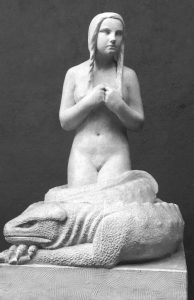
The monsters in the Fox Spirit books of Monsters don’t sparkle or have any desire to be a human or part of the human society. These monsters have no interest in you except tearing you apart or putting terror in your heart. Bless them.
In the continent of Asia you find the shape-shifters, the flesh-eating walking dead and the great monsters of the lakes and sea. Also, what has struck me while editing this volume is all the spirits and ghosts who exist in much of the Asian folklore. Several of these spirits and ghosts are mischievous, some quite terrifying, many sad.
The stories in African Monsters were about place and origin, about immigration and going home—maybe a strong witness of how much the soil of Africa means to these authors. Home is an underlying theme in Asian Monsters too but here it’s not so much about the place but about the family itself and the strong relationships between loved ones, dead, living or not there.
This time we have managed to include one translated story, the lovely story by Xia Jia (translated by Ken Liu), something I am immensely happy about. Hopefully this is something I will also be able to include in the coming volumes and I am grateful for any recommendations of authors who tell great monster tales in other languages than English.
I have tried to be loyal to Jo and my mission with the monster books and hopefully I have succeeded in this with Asian Monsters. I wish to thank all who have made this book possible: Adele Wearing and her fantastic team at Fox Spirit Books, people who have helped out with research and local knowledge, Daniele Serra for his wonderful cover art, and all the amazing authors and artists. Thank you!
***
Margrét Helgadóttir is a Norwegian-Icelandic writer and editor living in Oslo. Her stories have appeared in a number of both magazines and print anthologies such as In flight literary magazine, Gone Lawn, Luna Station Quarterly, Tales of Fox and Fae and Girl at the End of the World. Her debut book The Stars Seem So Far Away was published by Fox Spirit Books in 2015 and was shortlisted as Best Collection to British Fantasy Awards 2016. Margrét is co-editor for the Fox Spirit Books anthologies European Monsters (2014) and African Monsters (2015). African Monsters was also shortlisted (Best Anthology) to British Fantasy Awards 2016. She is also editor for the Fox Spirit Books anthologies Winter Tales (2016), Asian Monsters (Dec 2016) and Pacific Monsters (Nov 2017). Learn more on her webpage http://margrethelgadottir.
Well the festive season is well under way. People are swamped with office parties and festive fun. Here at Kettu Talo we are trying to balance the social commitments with all the end of year tie up. It’s certainly keeping us busy. The cats are ‘helping’.

I just wanted to take a moment to say books make great gifts, so if you are thinking of buying anyone books for Christmas we thoroughly endorse that, and ask that you give some thought to maybe supporting a small press (any small press) and/or diverse writers this year. It’s been a tough one for a lot of us on practical and emotional levels.
If you are thinking of buying a Fox Spirit Book this Christmas, you can find a list of available titles here and links to them on Amazon here. We also wanted to remind you that we are a print on demand operation, so even with Amazon Prime titles may take a few days to arrive.
May you all have a wonderful festive season, however you spend it! Please be kind to retail workers and make sure you find lots of time to tuck yourself away for a read.

The monster who breaks the ice with, “Where are you from?”
By Eliza Chan
“I’m from Glasgow.”
“No, where are you from originally?”
It’s the conversation opener that every person of colour has been on receiving end of. The persistent refusal to accept that I’m, as I say I am, Scottish. I bat it off, tell the asker that I’m from my mother’s womb, glare at them, pretend not to hear. But they don’t give up. They ask again, perhaps, I didn’t hear them the first time.
“Where were you born? Your home land? Your ethnic origin?”
I was born in a hospital just south of Loch Lomond. I have a West coast accent and I worked in a kilt shop when I was a student.
“Ah, you are from China,” comes the sage reply when I finally capitulate. As if, now that a neat label has been put on my ethnic origin, it makes everything better. That the unknown quality was worrying them too much to just talk to me. And the thing is, if they bothered getting to know me, it would come up. I talk about my mum with her Chinese traditions, my husband cooking Asian food, my terrible Cantonese and my trips to Hong Kong.
I always knew we were different. We lived in a commuter town near Glasgow, one of only three Chinese families in the local area. I convinced the kids at primary school that Jackie Chan was my uncle and that I could kung-fu paralyse them with two fingers. I was jealous of their Sunday roasts, going to church and having special spoons just for soup.
But guess what? The belligerent questions don’t just come from White-British people.
When I first went to university in Edinburgh, other Asian students kept asking me if I was a BBC. I shook my head, having no affiliation with the TV channel, until it was finally explained to me.
“You are. A BBC- British Born Chinese. A banana.”
The Asian international students saw me, and other British-Chinese people, as yellow on the outside, white on the inside. Bananas. I speak Cantonese like a 5 year old and I didn’t know the origins of the Dragon Boat or Harvest Moon festivals. I don’t believe in the healing properties of herbal soup, I have showers in the morning and sometimes, I even wear my shoes indoors!
There’s a spectrum within the British-Chinese community. Some are immersed in Chinese culture. Their friends are Chinese, they grew up watching wuxia dramas and singing Canto pop on home karaoke machines. On the opposite end are those who want to fit in with Western friends, who refuse to speak Chinese and reject Asian friendships. But most of us vacillate between the two. I found it difficult to make Chinese friends growing up. Within the already small community, finding people who love fantasy and geekdom was even more difficult. There didn’t seem to be space for reading, writing, crafting, philosophical debates with friends. The likelihood is, if I had stayed in Glasgow, I would have rejected most of my Chinese culture.
But I moved.
I moved to Japan because I loved anime and J-pop. But I also moved because I never tired of asking my mother how she had survived in the UK, 17 and illiterate, speaking not a word of English, and only learning how to use a knife and fork on the plane. She just got on with it. And I wanted to do the same thing. To challenge myself to live in a country where I didn’t speak the language.
Japan was a culture shock to me in a way it might not be to other gaijin. I had no problem with the daily rice meals, the unidentifiable meats, the chopsticks and noodle slurping. I had a problem with being invisible. Suddenly I went from being the one person of colour at most events, to another anonymous Asian face. My colleagues with their white skin got special treatment, strangers complimenting them, making allowances, whereas all I got was a confused look as I stumbled over Japanese words.
There are so many local events in Japan. From the onidaiko devil drumming festival in Sado to the belly button festival in Furano, traditions are still well and truly alive. Hello Kitty is seen in every souvenir shop with a different food or clothing to denote the local area and tourists flock to buy the regional foods as gifts.
“What festivals do you have in Glasgow? What are your local foods? Your local costume?”
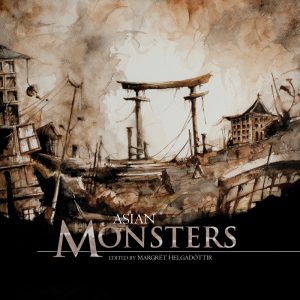
For this first time, I was not questioning if I was Chinese enough, I was questioning if I was Scottish enough. I didn’t have all the answers. I had to Google some, shrug off the others. And perhaps no-one knows all the answers. Because my experience is Glasgow, and around Glasgow. I couldn’t speak for the islands, the Borders, the east coast. Heck, I couldn’t even speak for the south-side of Glasgow.
When I was in Japan, an American colleague said something that stays with me. Her husband was Japanese and they had several children together. She told me that in Japan, they call mixed race children “hafu”, much like we might say they were half-Japanese. No-one was calling her children half of anything. “No,” she said. “My children are doubles.” Both Japanese and American, they have double the language, double the culture, double the joy.
And it’s only when I came to accept this dual identity that I stopped asking if I was enough of anything. The culture of the British-Chinese community is divergent from both Chinese and British. It’s not less, or half, it’s simply different. We have different words from Hong Kong Cantonese, different dishes in our restaurants. The big night out is Monday and weddings are often on Tuesdays, because the Chinese takeaways usually closed on Tuesdays. We all remember the worn VHS tape of a badly dubbed anime or drama, making its rounds through various families as the static lines grew with each rewind. We remember clingfilm on the TV remote and plastic on the dining room chairs. Christmas is widely celebrated by my generation but dependent on family, it has been lovingly hewn together like a delicious Frankenstein’s monster with fried rice instead of potatoes or roast pork instead of pigs in blankets. And even all of that is changing as more people get graduate jobs, find work outside of the takeaways, with people who have come from mainland China, Singapore, Malaysia and other countries.
Asian Monsters is a double, a Western-Eastern hybrid that has spawned something that new. And as much as I love folklore and mythology, I’m glad there is this creation, this monster still evolving as we evolve with it.
In Which Doors Make A Great Analogy Tool
Eve Shi
In author interviews, one of the most frequent questions I receive is, “What got you interested in writing horror novels?”
Before December 2012, publishing horror novels—as in printed books that are available in Indonesian bookstores—was the furthest thing from my mind. My long fiction gravitates more toward fantasy and adventure. Then I heard that a certain publisher was going to accept horror novels for publication in 2013. For the record, the publisher is widely known for their romance novels, movie tie-ins, and gorgeous covers. I thought, why not? After all, it’s one of my favorite genres. So, during that December, I wrote a horror novel for the first time.
Since the novel is YA, my main concerns were—in no particular order—how to make the story scary, and how to depict relatable and fairly realistic teenage characters. (My own teenage days being a long, long way behind me) K-pop was extremely popular in 2012, so I peppered the story with K-pop references in the hope that it resonates with today’s teens. (Reading the novel, you could probably tell I had a casual interest in Super Junior)
The overall response to the novel seemed quite positive, considering I was an unknown. Since then, I’ve had four more novels published, not all of them of the supernatural bent. Thus, by challenging myself to write something I never had before, I opened a door of opportunity while expanding my writing repertoire.
I peeked through another door in 2015, when I dared myself to submit to paid English-language publications. That part of the publishing world had always seemed vast and intimidating to me (it still does). What’s the worst that can happen? I asked myself. Rejections, right? Okay, and maybe a bit of bruised pride.
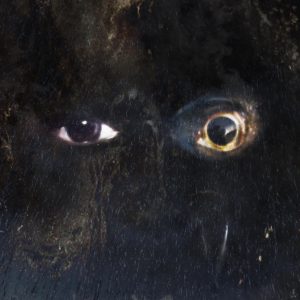
Unlike my novels, my short stories for English-language publications are based on local legends. Because why not use the opportunity to introduce Indonesian legends to a wider audience? Different medium, different purposes. For instance, what if those legendary figures are still alive today? What do they do, and do the events that once changed their lives still affect them? Exploring these themes was a new experience for me, and turned out to be a heap of fun.
In short, what got me interested in writing horror novels was an opportunity. Ditto about submitting to English-language publications, since many publications are open to the types of stories I enjoy writing. Walking through these doors has been eye-opening, and I’m ready to search for the next door.
Our folklore monsters, yokai, are the way through which our ancestors tried to explain the aspects of the universe, otherwise unexplained at the time: mostly fear for the unknown. It’s dark, you want to reach the comfort of your home as soon as you can, but you find yourself unable to keep walking–if you feel something is trying to trip you, it might be a monster called sunekosuri, calf-rubber; if you feel as though something large is blocking your path, it might be nurikabe, the wall monster.

Ghosts are categorized as yokai, too. People probably tried to explain *what happens* once you’re dead, by creating ghosts. Or perhaps tried to reconcile themselves with the fear for death, by imagining that something goes on after death of their body, even as monster.
Now, the main character of my story “Kokuri’s Palace,” Crone Kokuri (kuri means the temple’s kitchen, ko- is a prefix meaning old), I think, falls in this “explaining the unexplained” category, too. In our folklore she is an old woman living in an old temple. She strips corpses of their skins, eats the flesh, weaves stuff with the corpses’ hair. This is, I think, how people tried to see where corpses go after they are buried. By making her find the use for hair, they even explained how the hair lasted longer than the flesh, and what became of it.
The part about Kokuri wearing the corpses’ skin is entirely my creation. She is always depicted as a horrifying, grotesque kind of a monster, and I wanted to imagine her finding entertainment, even in her solitude. And I hope she wouldn’t mind my tampering with her nature–after I die, I’ll be burned down to bones, and will have nothing I can offer her.